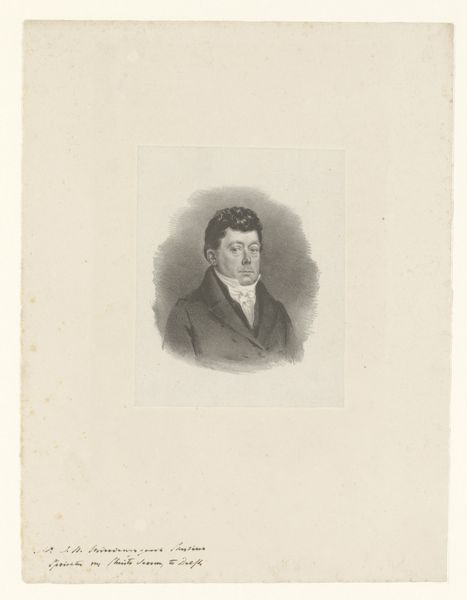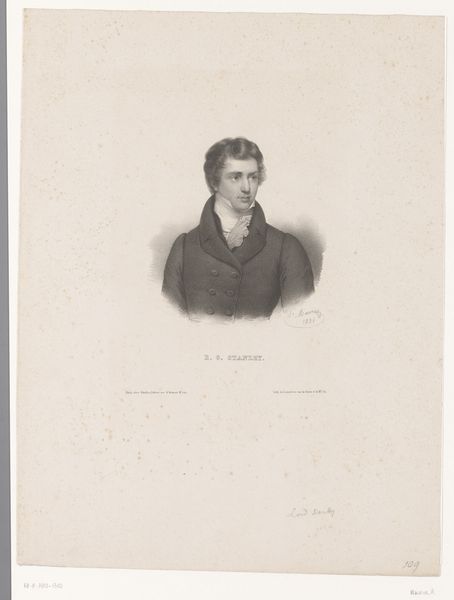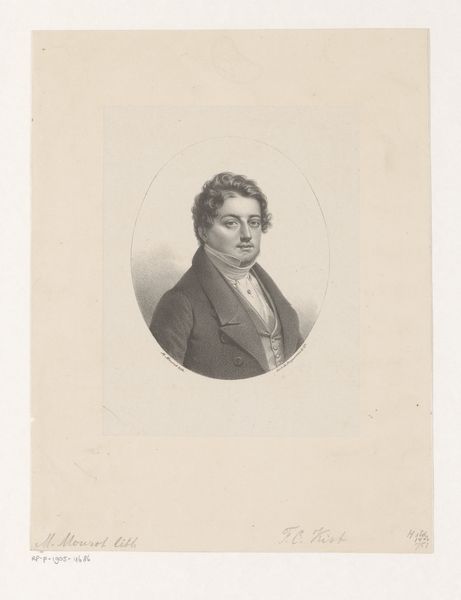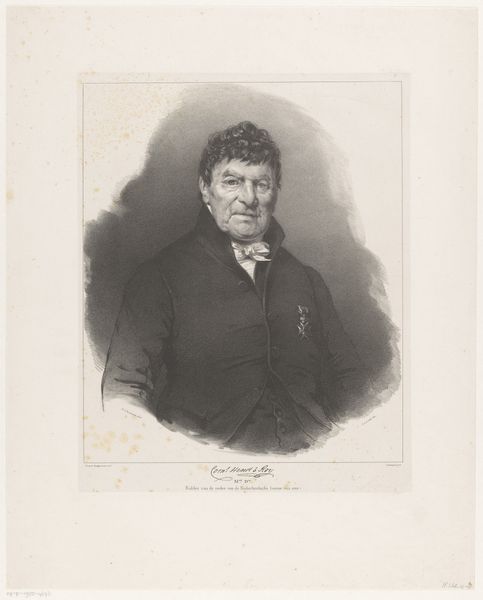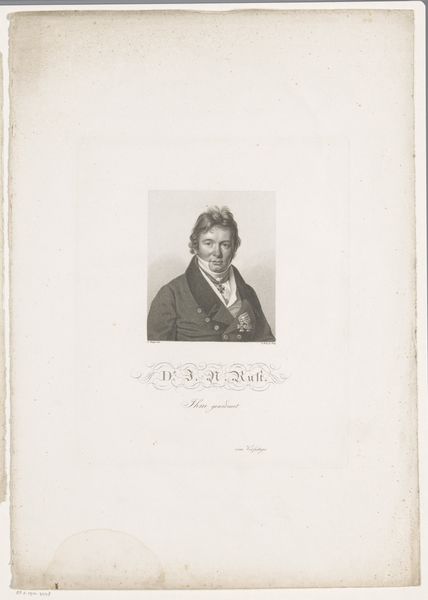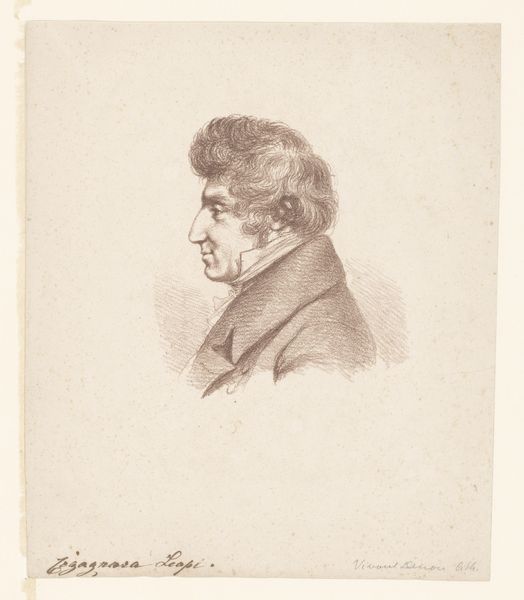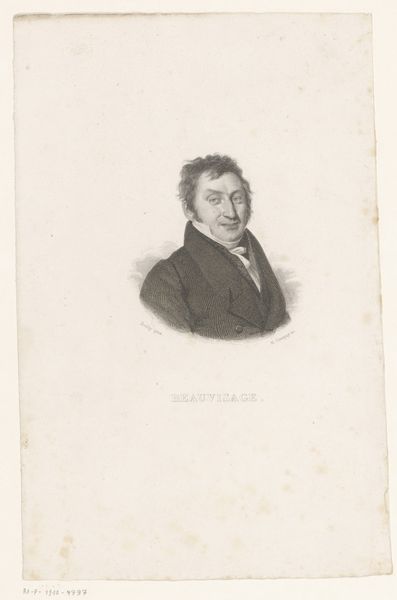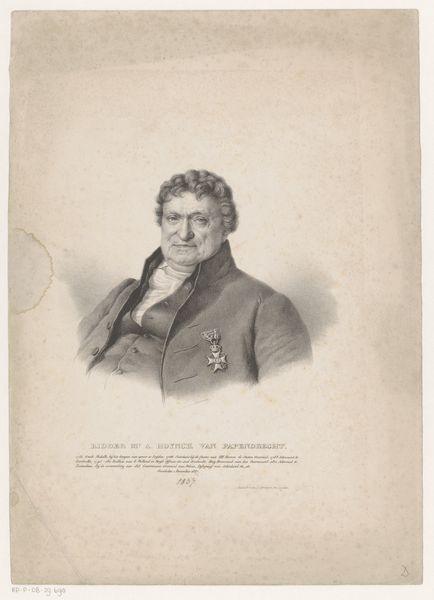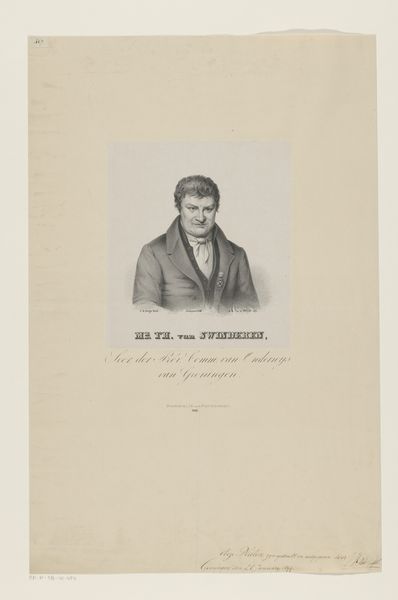
print, etching, engraving
#
portrait
#
pencil drawn
#
light pencil work
#
yellowing background
# print
#
etching
#
pencil sketch
#
old engraving style
#
romanticism
#
pencil work
#
engraving
#
realism
Dimensions: height 310 mm, width 250 mm
Copyright: Rijks Museum: Open Domain
Editor: This is a portrait of Theodorus van Swinderen, dating from between 1843 and 1851, created by Carel Christiaan Antony Last. It's an engraving, giving it a somewhat formal and historical feel. What's your take on this piece? Curator: It's fascinating how the very medium, an engraving, participates in constructing a certain kind of public image, especially in the context of 19th-century societal values. How does the formality you perceived potentially tie into the subject’s societal position, do you think? Editor: Perhaps the subject held some kind of important societal rank? I mean, he is wearing what looks to be a medal of some kind. Curator: Exactly. Engravings like this were often commissioned by or for individuals of stature – academics, politicians, wealthy merchants - to circulate their image, solidifying their public persona and legacy. Consider how this differs from, say, a painted portrait in terms of accessibility and purpose. This print allows for reproduction and wider distribution. How does this contrast impact your interpretation? Editor: That's interesting. A painted portrait feels more personal, almost like it is designed for private consumption, whereas engraving feels more geared toward broad distribution. Does that make this piece, therefore, closer to propaganda than art? Curator: Propaganda is a strong word, but it does highlight the performative aspect of portraiture within a specific social and political landscape. These images weren’t simply neutral records; they actively contributed to shaping public perception and reinforcing social hierarchies. It forces us to consider how art serves ideological functions within society. Editor: I never considered that the medium itself could play such an active role in conveying a message beyond just the likeness of the person. It makes me want to look closer at how different media were used to depict people throughout history. Curator: Precisely. Examining these images critically helps us unpack the complex relationship between art, power, and public perception.
Comments
No comments
Be the first to comment and join the conversation on the ultimate creative platform.
